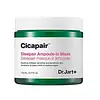What's inside
What's inside
 Key Ingredients
Key Ingredients

 Benefits
Benefits

 Concerns
Concerns

 Ingredients Side-by-side
Ingredients Side-by-side

Water
Skin ConditioningDipropylene Glycol
HumectantGlycerin
HumectantCaprylyl Methicone
Skin Conditioning1,2-Hexanediol
Skin ConditioningAchillea Millefolium Oil
CleansingHouttuynia Cordata Extract
Skin ConditioningIlex Aquifolium Leaf Extract
Skin ConditioningNiacinamide
SmoothingTrehalose
HumectantVinyldimethicone
Butylene Glycol
HumectantDimethiconol
EmollientCetyl Dimethicone
EmollientChondrus Crispus Extract
Skin ConditioningAcrylates/C10-30 Alkyl Acrylate Crosspolymer
Emulsion StabilisingAmmonium Acryloyldimethyltaurate/Vp Copolymer
Polyvinyl Alcohol
Saccharum Officinarum Extract
MoisturisingTromethamine
BufferingCaprylyl Glycol
EmollientHydroxyethyl Acrylate/Sodium Acryloyldimethyl Taurate Copolymer
Emulsion StabilisingPolyisobutene
Hedera Helix Extract
AntimicrobialStreptococcus Thermophilus Ferment
HumectantMelia Azadirachta Leaf Extract
Skin ConditioningMelia Azadirachta Flower Extract
Skin ConditioningAdenosine
Skin ConditioningDisodium EDTA
Panthenol
Skin ConditioningCaprylyl/Capryl Glucoside
CleansingSorbitan Oleate
EmulsifyingMadecassoside
AntioxidantCurcuma Longa Root Extract
MaskingOcimum Sanctum Leaf Extract
Skin ConditioningFusidium Coccineum Ferment Filtrate
Skin ConditioningEthylhexylglycerin
Skin ConditioningCoccinia Indica Fruit Extract
Skin ConditioningDna
Skin ConditioningAmber Powder
Solanum Melongena Fruit Extract
Skin ConditioningDextrin
AbsorbentTheobroma Cacao Seed Extract
AntioxidantCorallina Officinalis Extract
Skin ConditioningMoringa Oleifera Seed Oil
EmollientMethylpropanediol
SolventCentella Asiatica Leaf Extract
Skin ConditioningBamboo Vinegar
AntimicrobialAsiatic Acid
Skin ConditioningMadecassic Acid
Skin ConditioningCalcium Chloride
AstringentCentella Asiatica Extract
CleansingEryngium Maritimum Callus Culture Filtrate
Skin ConditioningWater, Dipropylene Glycol, Glycerin, Caprylyl Methicone, 1,2-Hexanediol, Achillea Millefolium Oil, Houttuynia Cordata Extract, Ilex Aquifolium Leaf Extract, Niacinamide, Trehalose, Vinyldimethicone, Butylene Glycol, Dimethiconol, Cetyl Dimethicone, Chondrus Crispus Extract, Acrylates/C10-30 Alkyl Acrylate Crosspolymer, Ammonium Acryloyldimethyltaurate/Vp Copolymer, Polyvinyl Alcohol, Saccharum Officinarum Extract, Tromethamine, Caprylyl Glycol, Hydroxyethyl Acrylate/Sodium Acryloyldimethyl Taurate Copolymer, Polyisobutene, Hedera Helix Extract, Streptococcus Thermophilus Ferment, Melia Azadirachta Leaf Extract, Melia Azadirachta Flower Extract, Adenosine, Disodium EDTA, Panthenol, Caprylyl/Capryl Glucoside, Sorbitan Oleate, Madecassoside, Curcuma Longa Root Extract, Ocimum Sanctum Leaf Extract, Fusidium Coccineum Ferment Filtrate, Ethylhexylglycerin, Coccinia Indica Fruit Extract, Dna, Amber Powder, Solanum Melongena Fruit Extract, Dextrin, Theobroma Cacao Seed Extract, Corallina Officinalis Extract, Moringa Oleifera Seed Oil, Methylpropanediol, Centella Asiatica Leaf Extract, Bamboo Vinegar, Asiatic Acid, Madecassic Acid, Calcium Chloride, Centella Asiatica Extract, Eryngium Maritimum Callus Culture Filtrate
Water
Skin ConditioningGlycerin
HumectantDimethicone
EmollientCetearyl Olivate
Sorbitan Olivate
EmulsifyingSodium Hyaluronate
HumectantSerine
MaskingGlycine
BufferingAlanine
MaskingThreonine
Arginine
MaskingProline
Skin ConditioningLysine Hcl
Skin ConditioningGlutamic Acid
HumectantSodium PCA
HumectantPCA
HumectantSodium Lactate
BufferingUrea
BufferingSodium Chloride
MaskingCitric Acid
BufferingBetaine
HumectantAllantoin
Skin ConditioningFructose
HumectantMaltose
MaskingTrehalose
HumectantGlucose
HumectantPentylene Glycol
Skin ConditioningSynthetic Beeswax
Emulsion StabilisingPolyacrylate Crosspolymer-6
Emulsion StabilisingDimethicone Crosspolymer
Emulsion StabilisingDimethiconol
EmollientEthylhexylglycerin
Skin ConditioningCaprylyl Glycol
EmollientSodium Hydroxide
BufferingWater, Glycerin, Dimethicone, Cetearyl Olivate, Sorbitan Olivate, Sodium Hyaluronate, Serine, Glycine, Alanine, Threonine, Arginine, Proline, Lysine Hcl, Glutamic Acid, Sodium PCA, PCA, Sodium Lactate, Urea, Sodium Chloride, Citric Acid, Betaine, Allantoin, Fructose, Maltose, Trehalose, Glucose, Pentylene Glycol, Synthetic Beeswax, Polyacrylate Crosspolymer-6, Dimethicone Crosspolymer, Dimethiconol, Ethylhexylglycerin, Caprylyl Glycol, Sodium Hydroxide
 Reviews
Reviews

Ingredients Explained
These ingredients are found in both products.
Ingredients higher up in an ingredient list are typically present in a larger amount.
Caprylyl Glycol is a humectant and emollient, meaning it attracts and preserves moisture.
It is a common ingredient in many products, especially those designed to hydrate skin. The primary benefits are retaining moisture, skin softening, and promoting a healthy skin barrier.
Though Caprylyl Glycol is an alcohol derived from fatty acids, it is not the kind that can dry out skin.
This ingredient is also used as a preservative to extend the life of products. It has slight antimicrobial properties.
Learn more about Caprylyl GlycolDimethiconol is a silicone that resembles the popular dimethicone. Like other silicones, it is an emollient. Emollients create a thin film on skin to prevent moisture from escaping.
This ingredient helps to create a silky texture and improve spreadability. Due to its high molecular weight and thickness, it is often combined with cyclopentasiloxane.
Ethylhexylglycerin (we can't pronounce this either) is commonly used as a preservative and skin softener. It is derived from glyceryl.
You might see Ethylhexylglycerin often paired with other preservatives such as phenoxyethanol. Ethylhexylglycerin has been found to increase the effectiveness of these other preservatives.
Glycerin is already naturally found in your skin. It helps moisturize and protect your skin.
A study from 2016 found glycerin to be more effective as a humectant than AHAs and hyaluronic acid.
As a humectant, it helps the skin stay hydrated by pulling moisture to your skin. The low molecular weight of glycerin allows it to pull moisture into the deeper layers of your skin.
Hydrated skin improves your skin barrier; Your skin barrier helps protect against irritants and bacteria.
Glycerin has also been found to have antimicrobial and antiviral properties. Due to these properties, glycerin is often used in wound and burn treatments.
In cosmetics, glycerin is usually derived from plants such as soybean or palm. However, it can also be sourced from animals, such as tallow or animal fat.
This ingredient is organic, colorless, odorless, and non-toxic.
Glycerin is the name for this ingredient in American English. British English uses Glycerol/Glycerine.
Learn more about GlycerinTrehalose is a disaccharide made of two glucose molecules (glucose is sugar!). Trehalose is used to help moisturize skin. It also has antioxidant properties.
As a humectant, trehalose helps draw moisture from the air to your skin. This helps keep your skin hydrated.
Due to its antioxidant properties, trehalose may help with signs of aging. Antioxidants help fight free-radical molecules, unstable molecules that may damage your skin.
In medicine, trehalose and hyaluronic acid are used to help treat dry eyes.
Some animals, plants, and bacteria create trehalose as a source of energy to survive freeze or lack of water.
Learn more about TrehaloseWater. It's the most common cosmetic ingredient of all. You'll usually see it at the top of ingredient lists, meaning that it makes up the largest part of the product.
So why is it so popular? Water most often acts as a solvent - this means that it helps dissolve other ingredients into the formulation.
You'll also recognize water as that liquid we all need to stay alive. If you see this, drink a glass of water. Stay hydrated!
Learn more about Water